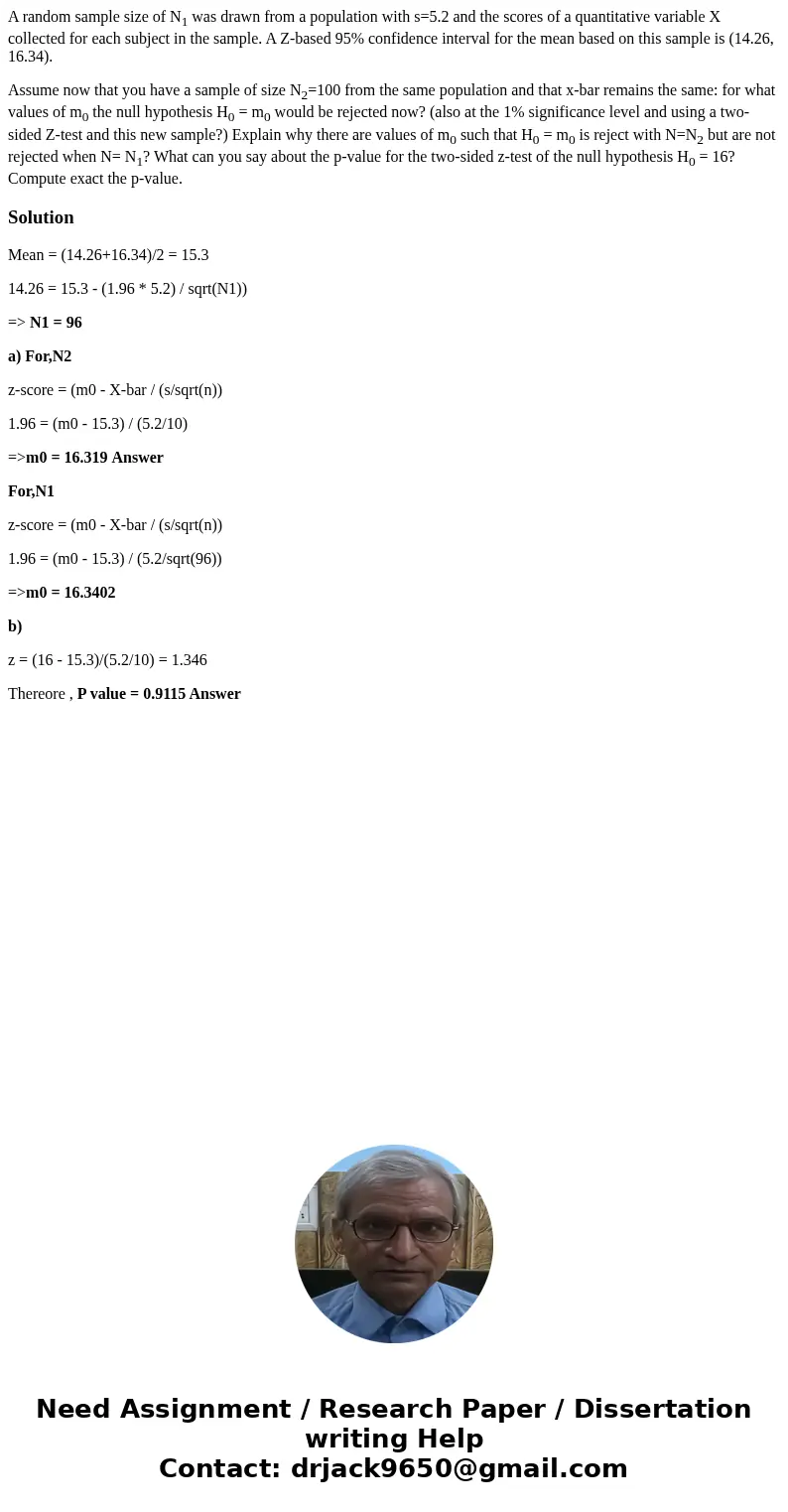A random sample size of N1 was drawn from a population with
A random sample size of N1 was drawn from a population with s=5.2 and the scores of a quantitative variable X collected for each subject in the sample. A Z-based 95% confidence interval for the mean based on this sample is (14.26, 16.34).
Assume now that you have a sample of size N2=100 from the same population and that x-bar remains the same: for what values of m0 the null hypothesis H0 = m0 would be rejected now? (also at the 1% significance level and using a two-sided Z-test and this new sample?) Explain why there are values of m0 such that H0 = m0 is reject with N=N2 but are not rejected when N= N1? What can you say about the p-value for the two-sided z-test of the null hypothesis H0 = 16? Compute exact the p-value.
Solution
Mean = (14.26+16.34)/2 = 15.3
14.26 = 15.3 - (1.96 * 5.2) / sqrt(N1))
=> N1 = 96
a) For,N2
z-score = (m0 - X-bar / (s/sqrt(n))
1.96 = (m0 - 15.3) / (5.2/10)
=>m0 = 16.319 Answer
For,N1
z-score = (m0 - X-bar / (s/sqrt(n))
1.96 = (m0 - 15.3) / (5.2/sqrt(96))
=>m0 = 16.3402
b)
z = (16 - 15.3)/(5.2/10) = 1.346
Thereore , P value = 0.9115 Answer

 Homework Sourse
Homework Sourse